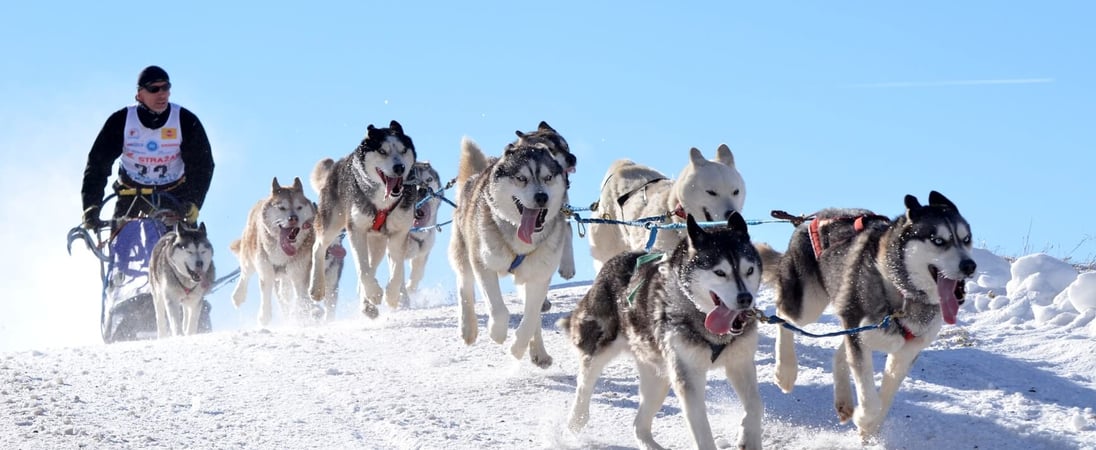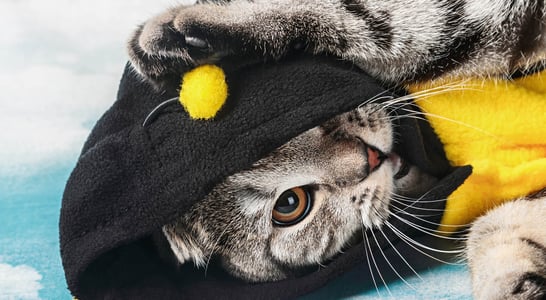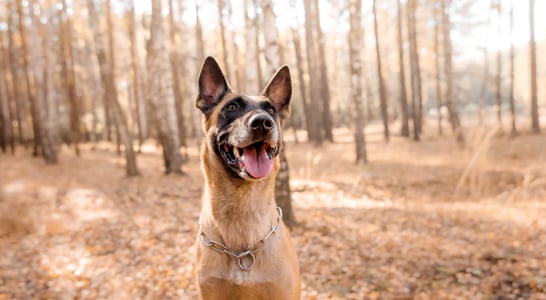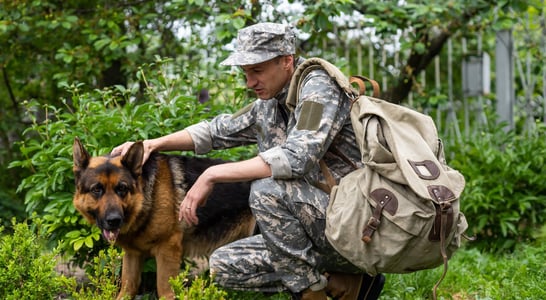
National Sled Dog Day
High-energy, furry athletes powering through snow and ice — a testament to teamwork and nature's endurance champs.
Running through snow all day, every day, pulling a sled that can weigh hundreds if not thousands of pounds—that’s a sled dog’s job.
Don’t you think they might deserve a little recognition? This is the official holiday of the sled dog!
How to Celebrate National Sled Dog Day
Sled dogs are celebrated for their role in polar expeditions, and a number of famous dog races are organised each year.
National Sled Dog Day is an opportunity to raise awareness of the animals’ dedication to the human race. Check out these ideas for enjoying the day:
Support Animal Organizations
National Sled Dog Day can be a time to raise money for dog charities taking care of homeless, or sick dogs, and those that have been cruelly abandoned by their owners.
There are also numerous opportunities to volunteer at your local animal shelter to spend time with some of the dogs living there, play with them, or take them out for walks.
Dogs are generally social, friendly creatures that love physical activity and playing games, so even the smallest gesture on your part to celebrate National Sled Dog Day will definitely be greatly appreciated by a dog that has nothing to do but sit in a cage or pen all day, every day.
Adopt a Former Sled Dog
Who knows, maybe you’ll meet a former sled dog, become friends and then decide to adopt the dog? That would be the ultimate gesture of respect towards the sled dogs that sacrificed their health and sometimes their lives, for the good of men.
Learn More Through PETA
Organizations like PETA take the opportunity to point out how many dogs are being abused and mistreated in the world and encourage people to take action if they happen to witness any kind of abuse being perpetrated on man’s best friend.
PETA is also strongly opposed to the runs that take place in Alaska every year, saying they exhaust the animals for no good reason, and implore of Alaskan tourists not to patronize the Iditarod annual commemorative race, or any tourist attractions that include dogsled rides.
History of National Sled Dog Day
Sled dogs are thought to have evolved in the mountainous regions of Northern Asia over 35,000 years ago, but are thought to have started actually pulling sleds for people about 3,000 years ago, when hunting and fishing communities were forced to move further up north to Siberia.
From there, they made their way to Lapland, Alaska, Canada and even Greenland. Historical references to actual dog harnesses far outdate the first European contact with the native peoples of Alaska and Canada.
In fact, it was the Alaskan gold rush that really got the American population interested in the use of sled dogs as a form of transportation, as most gold camps were only accessible by dogsled in the winter months.
In fact, for a long while, dogsleds were the only relatively dependable way of transporting anything in the harsh Alaska and Yukon weather conditions, until airplanes finally took over in the 1930s.
Dogsleds were also used to patrol western Alaska as late as World War II. After that, mushing became largely recreational.
One of sled dogs’ most impressive achievements was the 1925 serum run from Nome to Nenana. With a diptheria threatening the lives of people in Nome and the serum needed being 1,100 kilometers (700 miles) away in the town of Nenana, hundreds of people may have died if not for the 20 dogsled teams that worked together to relay the serum to Nome.
In the end, the serum reached Nome in only 6 days, saving the lives of many. Also, the first Arctic explorers were men with sled dogs.
National Sled Dog Day was founded to show appreciation for the unique cultural connection between animals and humans in the snow!
National Sled Dog Day FAQs
What was the longest sled dog relay in history?
In 1925, during the diphtheria outbreak in Nome, Alaska, a relay of 20 mushers and about 150 sled dogs transported life-saving serum over 674 miles in just over five days.
This event, known as the “Great Race of Mercy,” showcased the endurance and speed of sled dogs.
Which sled dog breed is known for its unique blue eyes?
The Siberian Husky often has striking blue eyes. This breed, originating from Northeast Asia, was developed by the Chukchi people for sled pulling and companionship. Their distinctive eye color adds to their allure.
How did sled dogs contribute during World War II?
During World War II, the U.S. Army established the “Canine Corps,” which included sled dogs trained for search and rescue missions in Arctic regions.
These dogs were essential in retrieving downed pilots and delivering supplies in harsh conditions.
What is the significance of the “Widow’s Lamp” in sled dog racing?
In the Iditarod Trail Sled Dog Race, a lantern called the “Widow’s Lamp” is lit at the finish line in Nome and remains burning until the last musher arrives.
This tradition symbolizes the safety of all participants on the trail.
Are there any sled dog races held in urban environments?
Yes, the “Klondike Dog Derby” takes place in Excelsior, Minnesota, bringing the excitement of sled dog racing to city streets. This event allows urban residents to experience the thrill of mushing firsthand.
What is the origin of the term “mushing” in sled dog culture?
The term “mushing” comes from the French word “marcher,” meaning “to walk” or “to go.”
French-Canadian fur trappers used the command “marche!” to urge their dogs forward, which evolved into the term “mush” used today.
How do sled dogs stay warm in extreme cold?
Sled dogs have a double-layered coat: a dense undercoat for insulation and a longer outer coat to repel snow and moisture. Their circulatory system also adapts to cold, maintaining warmth in their extremities.
What is the “Golden Harness” award in sled dog racing?
In the Iditarod, the “Golden Harness” is awarded to the lead dog of the winning team, recognizing its exceptional performance and leadership during the race.
This honor highlights the crucial role of lead dogs in mushing.
Can sled dogs be adopted after retirement?
Yes, many retired sled dogs find loving homes as pets. Organizations facilitate the adoption of these hardworking canines, ensuring they enjoy a comfortable life after their racing careers.
What is the “Red Lantern” award in sled dog racing?
The “Red Lantern” is awarded to the last musher to finish the Iditarod, celebrating perseverance and determination. This tradition honors the spirit of completing the challenging race, regardless of placement.
Also on ...
View all holidaysWorld Play Your Ukulele Day
This happy-go-lucky instrument can turn any frown upside down. Its sweet sound and portability make it perfect for jamming anywhere, anytime!
National Crepe Day
Indulge in a thin and delicious French pastry that can be filled with anything from sweet to savory. Bon appétit!
2FA Day
By adding an extra layer of security, 2FA fortifies your digital defenses, ensuring your online interactions remain safeguarded and private.
National Brown Dog Day
Warm, caramel fur and playful personalities — the perfect companions for adventures in the great outdoors or cuddles on the couch.
We think you may also like...
National Dress Up Your Pet Day
Set up a literal catwalk and treat your furry friends to some safe, comfortable fashion, organize a fun photo shoot or go all out with matching outfits.
National Make a Dog’s Day
Welcoming a loyal companion into your life, a decision that transforms routines into shared adventures and lasting bonds.








